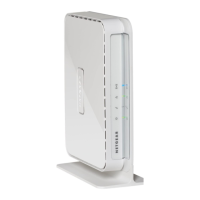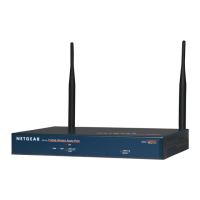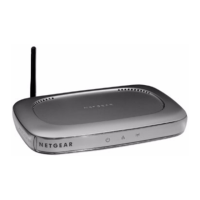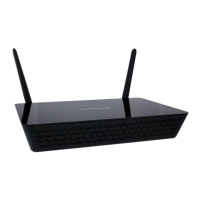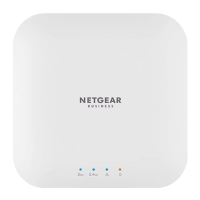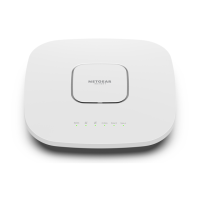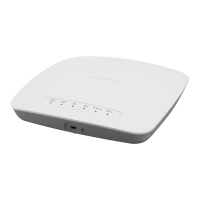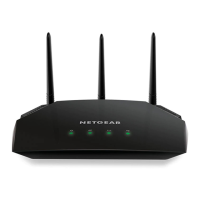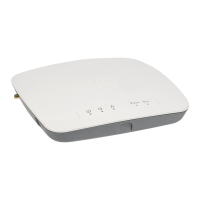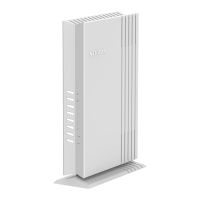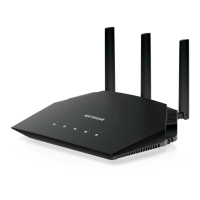Chapter 2. Installation and Basic Configuration | 25
ProSafe Wireless-N Access Point WNAP320 Reference Manual
2. Specify the fields as explained the following table:
Table 6. Basic Wireless Settings
Field Descriptions
Wireless Mode Select the wireless operating mode that you want to use by selecting one of the
following radio buttons:
• 11
b. 802.11b wireless stations only.
•
11bg. Both 802.11b and 802.11g wireless stations can be used.
• 11ng. Both 802.11n and 802.11g wireless stations can be used. This is the
default setting.
Turn Radio On The radio is enabled by default. To turn off the radio, clear the T
urn Radio On
check box. Doing so disables access through the wireless access point, which
can be helpful for configuration, network tuning, or troubleshooting activities.
Wireless Network Name
(
SSID)
Enter a 32-character (maximum) service set identifier (SSID); the characters are
case-sensitive. The default is NETGEAR_11ng. The SSID assigned to a wireless
device must match the wireless access point’s SSID for the wireless device to
communicate with the wireless access point. If the SSIDs do not match, you will
not get a wireless connection to the wireless access point.
Scheduler Status This is a nonconfigurable field that show th
e status of the wireless scheduler. For
more information, see Schedule the Wireless Radio on page 52.
Broadcast Wireless
Network Name (SSID)
Select the Ye
s radio button to enable the wireless access point to broadcasts its
SSID, allowing wireless stations that have a null (blank) SSID to adopt the
wireless access point’s SSID. Yes is the default setting. To prevent the SSID
from being broadcast, select the No radio button.
Channel / Frequency From the drop-down list, select the channel you wish to use on your wireless
LAN.
The wireless channels to use in the United States and Canada are 1 to 11;
for Europe and Australia, 1 to 13. The default setting is Auto.
Note: It should not be necessary to change the wireless channel unless you
expe
rience interference (indicated by lost connections or slow data transfers).
Should this happen, you might want to experiment with different channels to see
which is the best. For more information, see the guidelines following this table.
11ng mode only
Note: For most
networks, the
default
settings will work fine.
MCS Index / Data
Rate
From the drop-down list, select a Modulation and Coding
Scheme (MCS) in
dex and transmit data rate for the wireless
network. The default setting is Best. For a list of all options
that you can select from in 11ng mode, see Factory Default
Settings in Appendix A.
Channel Width From the drop-down list, select a channel width. The options
are Dynami
c 20/40 MHz, 20 MHz, or 40 MHz. A wider
channel improves the performance, but some legacy devices
can operate only in either 20 MHz or 40 MHz.
Ext Protection
Sp
acing
When you select a channel width of Dynamic 20/40 MHz or
40 MHz, you also need to select protection spacing for the
extension channel from the Ext Protection Spacing
drop-down list. In addition to the default value Auto, you can
also select a value of 20 or 25.
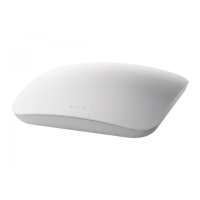
